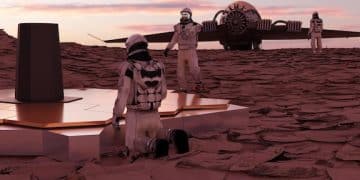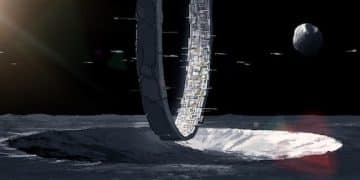NASA’s New Radiation Shielding: Protecting Astronauts on Long Missions
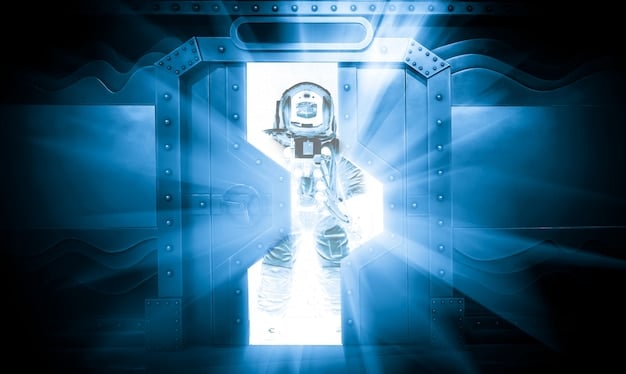
Long-duration space missions expose astronauts to hazardous radiation, making advanced shielding paramount; NASA’s cutting-edge technologies, integrating novel materials and innovative designs, are poised to revolutionize space safety by significantly mitigating these risks.
As humanity gazes further into the cosmos, the allure of deep-space exploration grows stronger, but so do the inherent dangers. One of the most critical challenges facing astronauts on extended journeys is exposure to harmful space radiation. To address this, NASA is continuously pushing the boundaries of protective technology. This article will uncover the insider secrets of NASA’s new radiation shielding technology, designed to protect astronauts on long-duration missions, exploring the innovative materials, designs, and strategies poised to make interplanetary travel safer than ever before.
The Silent Threat: Understanding Space Radiation for Human Exploration
Space, while vast and awe-inspiring, is also a harsh environment, particularly due to the pervasive presence of radiation. Unlike the protective blanket of Earth’s atmosphere and magnetic field, deep space offers little natural defense against high-energy particles. Understanding the different types of radiation and their biological effects is the first step in developing effective countermeasures.
There are primarily two main types of space radiation that pose significant threats to astronauts: Galactic Cosmic Rays (GCRs) and Solar Particle Events (SPEs). Both originate from outside Earth’s protective magnetosphere and can penetrate spacecraft walls, leading to cumulative doses that far exceed permissible limits on Earth.
Galactic Cosmic Rays (GCRs): The Constant Barrage
GCRs are high-energy atomic nuclei, primarily protons, but also heavier elements, that originate from supernovae and other violent events outside our solar system. They travel at nearly the speed of light and are omnipresent in deep space. Their high energy means they are incredibly penetrating and difficult to shield against effectively. Chronic exposure to GCRs can lead to a range of health issues.
- Long-term Health Risks: Increased risk of cancer, cataracts, and degenerative diseases.
- Neurological Impairment: Potential for cognitive and behavioral changes, affecting mission performance.
- DNA Damage: Direct damage to cellular DNA, leading to mutations and cell death.
Solar Particle Events (SPEs): The Sudden Storms
SPEs are sporadic bursts of high-energy protons and heavier ions emitted by the Sun during solar flares and coronal mass ejections (CMEs). While less frequent than GCRs, SPEs can deliver extremely high doses of radiation in a short period, posing an acute threat to astronauts. Timely warning and robust shielding are critical during these events.
The unpredictable nature of SPEs adds another layer of complexity to radiation protection. While GCRs represent a chronic, low-level exposure issue, SPEs present an acute, life-threatening challenge. Therefore, any comprehensive radiation shielding solution must address both types of radiation effectively. NASA researchers are meticulously studying the composition and energy spectrum of these particles to tailor shielding materials that can attenuate their destructive power. This fundamental understanding is paramount to engineering robust protective barriers, moving beyond simple mass to more sophisticated material science.
In essence, safeguarding astronauts involves a dual approach: continuous shielding against the constant GCR threat and dynamic, adaptable protection against the sudden, intense onslaught of SPEs. This requires not only innovative materials science but also robust predictive capabilities and operational protocols to ensure astronaut safety, transforming space travel from a high-risk endeavor to a more manageable one.
Beyond Lead: New Frontiers in Radiation Shielding Materials
For decades, lead has been the go-to material for radiation shielding on Earth, renowned for its density and ability to absorb X-rays and gamma rays. However, in space, lead presents significant drawbacks due to its weight and its effectiveness against high-energy particles like GCRs, which can cause secondary radiation when interacting with dense materials. NASA’s new approach moves beyond heavy metals, focusing on lighter, more efficient materials.
Hydrogen-Rich Materials: The Unsung Heroes
The key to effective radiation shielding in space, particularly against protons and heavy ions, lies in materials rich in hydrogen. Elements with low atomic numbers, like hydrogen, are more effective at scattering and stopping high-energy particles without producing as much harmful secondary radiation. This principle has led researchers to explore polymers, water, and even human waste as potential shielding components.
- Polyethylene: A common plastic, polyethylene is proving to be one of the most promising materials for space radiation shielding. Its high hydrogen content makes it highly effective at attenuating GCRs. Concepts include “sleep shacks” or “storm shelters” made of polyethylene for astronauts to retreat to during high-radiation events.
- Water and Waste Products: NASA is exploring ingenious ways to integrate essential mission elements into radiation shielding. Water, vital for life support, can also double as a radiation barrier. Furthermore, recycled waste products on board, such as human waste or used packaging, could be processed and compacted to form additional, localized shielding, reducing the need to launch dedicated shielding mass from Earth.
- Liquid Hydrogen Fuel: For deep-space propulsion, liquid hydrogen is a powerful fuel. Storing it in tanks around crew quarters could inherently offer substantial radiation protection. This dual-use strategy provides both propulsion and shielding, a significant advantage for long-duration missions.
The challenge with hydrogen-rich materials often lies in their structural integrity and long-term durability in the harsh space environment. Researchers are actively developing composite materials that combine the radiation-stopping power of hydrogen with the structural strength of other polymers or advanced fibers. These next-generation materials aim to be not only effective against radiation but also lightweight, structurally sound, and adaptable for various spacecraft components.
Furthermore, the concept of “multi-functional shielding” is gaining traction. This involves designing materials that serve multiple purposes beyond just radiation protection, such as insulation, structural support, or even power generation. For instance, self-healing polymers embedded with radiation-absorbing nanoparticles could offer a dynamic defense system. This holistic approach to material design is crucial for optimizing mass and volume on future spacecraft, making deep-space travel more feasible and sustainable. The shift from simply adding mass to strategically utilizing atomic properties represents a paradigm shift in space radiation protection.
Active Shielding: The Future of Dynamic Space Protection
While passive shielding, using physical barriers, is effective up to a point, its limitations become apparent on extremely long missions where mass is at a premium and the unpredictable nature of space radiation demands dynamic responses. This has led NASA to heavily invest in the research and development of active shielding systems, a groundbreaking approach that aims to manipulate radiation fields rather than simply blocking them.
Electromagnetic Fields: Creating a Magnetic Bubble
One of the most promising forms of active shielding involves the generation of powerful electromagnetic fields around the spacecraft. Similar to Earth’s magnetosphere, which deflects harmful solar particles and GCRs, these onboard fields could create a protective bubble, diverting charged radiation particles away from the crew. The concept is elegant but technically challenging due to the immense power requirements and the complexity of generating stable, large magnetic fields in space.
- Superconducting Magnets: These offer the potential to generate strong magnetic fields with minimal power consumption once activated. Research focuses on developing lightweight, efficient superconducting coils that can be deployed around habitable modules.
- Plasma Shields: While still largely theoretical for spacecraft applications, the idea of using a cloud of charged plasma to deflect radiation is being explored. This would involve ionizing a gas around the vehicle to create a dynamic electromagnetic barrier.
- Electrostatic Fields: Generating strong electric fields to repel charged particles is another avenue. This could involve charging the spacecraft’s exterior or specific panels to create a repulsive force against incoming radiation.
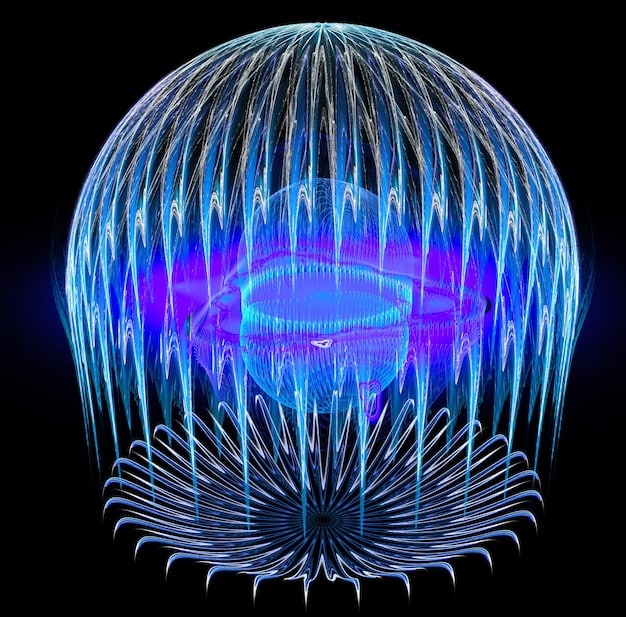
The primary advantage of active shielding is its potential to offer superior protection without adding significant mass. Instead of relying on brute force (i.e., thick layers of material), active systems exert a force on the charged particles themselves. This allows for a more “intelligent” defense, potentially adapting to varying radiation conditions and offering protection over a wider energy spectrum of particles compared to passive methods alone.
However, the technological hurdles are substantial. Beyond the power requirements, issues such as field stability, interactions with spacecraft systems, and the potential for secondary particle generation must be meticulously studied. Researchers are also exploring hybrid systems, combining the best aspects of both passive and active shielding to create a multi-layered defense. For instance, a spacecraft could have a primary passive shield augmented by a localized active field around the crew’s sleeping quarters. The dynamic interplay between these technologies represents the cutting edge of ensuring astronaut safety for future voyages to Mars and beyond, shifting the paradigm from static defense to an adaptable, energy-efficient protective system.
Integrating Shielding into Spacecraft Design: Holistic Approaches
Effective radiation shielding isn’t merely an add-on; it’s an integral part of spacecraft architecture. NASA’s advanced design philosophies embrace a holistic approach, where shielding is interwoven into every aspect of the vehicle, from its structure to its operational procedures. This optimizes mass, volume, and crew protection, creating truly radiation-hardened spacecraft.
Strategic Placement and Multi-Purpose Structures
One of the most efficient ways to mitigate radiation exposure is to utilize the spacecraft’s existing components for shielding. This involves clever design choices that maximize protection without incurring significant mass penalties.
- “Safe Havens”: Every deep-space mission will likely incorporate a designated “safe haven” or storm shelter. This small, heavily shielded compartment would be where astronauts retreat during high-energy SPEs. Components like water tanks, food stores, and even waste management systems could be strategically placed around this area to provide additional shielding.
- Propellant Tanks: For missions requiring large amounts of fuel (e.g., liquid hydrogen), the propellant tanks can be designed to encircle crew quarters, leveraging the fuel itself as a significant radiation barrier. As fuel is consumed, its shielding capacity diminishes, but it offers substantial protection during the initial, most vulnerable phases of the journey.
- Habitation Modules: Modular design allows for specialized materials to be used for different sections of the spacecraft. Habitation modules, where astronauts spend most of their time, can be constructed with hydrogen-rich composites, while less critical sections might use traditional, lighter materials.
Beyond material composition, architectural design plays a crucial role. For example, arranging crew living spaces such that critical equipment or support systems act as natural barriers can significantly reduce exposure. Thinking about the spacecraft as a nested series of protective layers, where each layer contributes to overall safety, is fundamental to this integrated approach. The synergistic effect of these design choices is far greater than simply adding layers of material randomly.
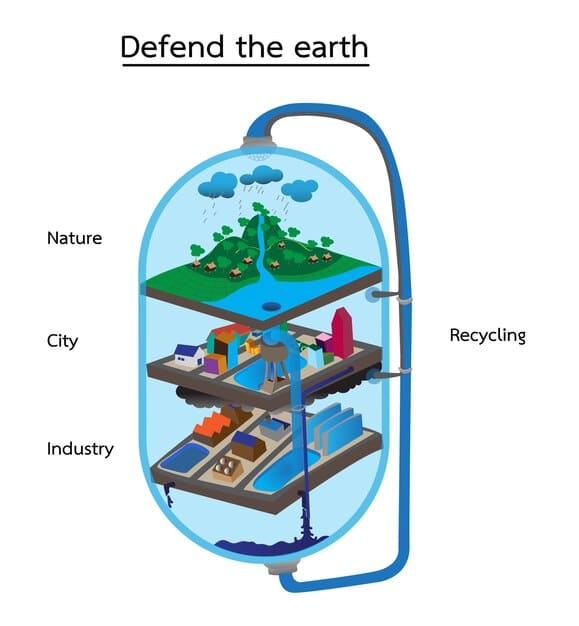
Furthermore, considering the 3D geometry of radiation interaction is vital. Conical or spherical designs might naturally offer better isotropic protection than flat panels, provided the internal layout is optimized. This involves advanced computational modeling to simulate radiation pathways and validate design effectiveness. The goal is to build protection “into” the vehicle, rather than “onto” it, creating a more efficient and effective whole. This paradigm shift ensures that every kilogram launched contributes to mission success, including the paramount goal of astronaut safety, making these advanced designs not just a luxury, but a necessity for truly ambitious voyages.
Terrestrial Applications and Spinoff Technologies of Radiation Shielding
The pursuit of advanced radiation shielding for space exploration has far-reaching implications beyond astronaut safety. Innovations driven by NASA’s research often find their way back to Earth, yielding significant benefits in fields such as medicine, nuclear energy, and even civil infrastructure. This technology transfer is a testament to the broad utility of foundational scientific inquiry.
Medical and Healthcare Advancements
One of the most direct beneficiaries of space radiation research is the medical sector. Technologies developed to protect astronauts can be adapted to improve radiation safety for healthcare professionals and patients.
- Improved Cancer Therapy: Proton therapy, a highly precise form of radiation treatment for cancer, requires robust shielding for both the equipment and surrounding areas. Insights from space shielding materials can lead to lighter, more effective barriers, potentially making this therapy more accessible.
- Diagnostic Imaging Safety: X-ray and CT scans expose patients and technicians to radiation. New lightweight, flexible shielding materials could enhance the safety of diagnostic procedures, particularly for pediatric patients or frequent imaging.
- Personal Protective Equipment (PPE): Development of lighter, more protective aprons and garments for medical staff working with radiation sources.
The demand for better radiation protection in hospitals and research facilities is constant. As space-grade materials become more cost-effective to produce, their adoption in medical settings could revolutionize safety protocols, minimizing exposure for both patients and healthcare providers. The detailed understanding of how various materials interact with different types of radiation, gained from NASA’s rigorous testing, is directly translatable to these terrestrial applications.
Nuclear Energy and Environmental Protection
The principles of radiation shielding are fundamental to the nuclear energy industry, from reactor design to waste storage. NASA’s innovations can contribute to safer and more efficient nuclear operations:
- Spent Nuclear Fuel Storage: Developing more durable and effective materials for casks used in storing radioactive waste. Hydrogen-rich materials, for example, could offer improved neutron absorption.
- Nuclear Reactor Safety: Enhanced shielding around reactor cores and spent fuel pools can reduce occupational exposure and improve overall safety margins.
- Decontamination and Decommissioning: New materials could facilitate the safe handling and containment of radioactive materials during the decommissioning of old nuclear facilities.
Moreover, the advanced sensor technologies developed to monitor radiation levels in space also have terrestrial counterparts, invaluable for environmental monitoring of radioactive sites or in response to nuclear incidents. The economic and safety benefits of these spinoffs are immense, underscoring that investment in space exploration often yields tangible benefits right here on Earth. The materials science revolution spurred by the challenge of deep space radiation is not just about human survival in orbit, but about better, safer lives on our home planet.
Challenges and the Path Forward for Radiation Shielding
Despite significant advancements, the development of truly comprehensive radiation shielding for long-duration space missions faces formidable challenges. The harsh realities of the space environment, coupled with the myriad constraints of spacecraft design, demand continuous innovation and a multi-faceted approach. However, overcoming these hurdles is not merely a technical pursuit; it is a fundamental requirement for expanding humanity’s reach beyond low-Earth orbit.
Mass, Volume, and Cost Constraints
The “tyranny of the rocket equation” dictates that every kilogram launched into space is incredibly expensive. This creates a fundamental tension: effective radiation shielding often implies significant mass, but excess mass limits mission objectives, such as payload capacity or achievable distances. Similarly, the volume occupied by thick shielding material reduces the available living and working space for astronauts.
- Optimized Materials: The ongoing search for materials with high shielding efficiency per unit mass is paramount. This includes exploring meta-materials, smart materials, and self-healing composites.
- Multi-functional Design: Integrating shielding into existing spacecraft structures and components (e.g., using water for both life support and shielding) is crucial for mass optimization.
- In-situ Resource Utilization (ISRU): The long-term vision involves using resources found on celestial bodies (like lunar regolith or Martian ice) to construct habitats with inherent radiation protection, drastically reducing the mass launched from Earth.
The cost associated with research, development, testing, and ultimately, launching advanced shielding technologies is substantial. Securing continued funding and fostering international collaboration are vital for accelerating progress in this capital-intensive field. The economic feasibility of deep-space missions hinges on finding cost-effective yet highly protective solutions for radiation. This delicate balance between protection, mass, and economic viability is a constant driver for engineering innovation, pushing boundaries far beyond conventional spacecraft design.
Predictive Capabilities and Biological Effects
While we understand the basic types of space radiation, accurately predicting specific radiation events (especially SPEs) and fully understanding the long-term biological effects of chronic GCR exposure remain complex challenges. The effects of microgravity and other space stressors can also compound radiation damage.
Advanced computational models are being developed to simulate radiation environments and predict the doses astronauts would receive on various missions. Ground-based facilities, such as the NASA Space Radiation Laboratory (NSRL) at Brookhaven National Laboratory, simulate space radiation to study its effects on biological systems and test shielding materials. These terrestrial experiments are critical but cannot fully replicate the dynamic, complex, and cumulative exposure astronauts face. Therefore, continuous monitoring of radiation levels during missions and ongoing health assessments of returning astronauts are essential for refining our understanding and improving predictive models. The ultimate goal is to move from reactive protection to proactive mitigation, driven by accurate forecasting and a deeper understanding of human biological responses to the space environment.
The Human Element: Astronaut Health and Psychological Resilience
While technological advancements in radiation shielding are crucial, the human element remains central to the success of long-duration space missions. Protecting astronauts involves not only physical barriers but also a deep understanding of the biological impacts of radiation and the psychological resilience required to endure such challenging conditions. NASA is investing heavily in both areas to ensure the holistic well-being of its crews.
Biological Impacts and Mitigation Strategies
Exposure to space radiation, even with advanced shielding, carries inherent risks to astronaut health. These risks range from immediate acute effects, such as radiation sickness during a major solar flare, to long-term chronic issues that manifest years after a mission. The focus is on understanding these impacts and developing countermeasures that work in concert with physical shielding.
- Cancer Risk: Radiation increases the risk of various cancers in the long term. Research is ongoing into early detection methods and personalized risk assessments.
- Central Nervous System (CNS) Effects: GCRs, in particular, can penetrate brain tissue, potentially leading to cognitive impairments, memory loss, or even behavioral changes. Studies are exploring pharmaceutical interventions or neuro-protective agents.
- Cardiovascular and Ocular Issues: Radiation has been linked to increased risk of heart disease and cataracts in astronauts. Monitoring and preventative measures are critical.
Beyond physical shielding, dietary supplements, exercise regimens, and even personalized medicine approaches are being explored to bolster astronauts’ natural defenses against radiation damage. The goal is to minimize biological vulnerability, making the human body more resilient to environmental stressors. This involves a personalized approach, recognizing that individual responses to radiation can vary, and tailoring mitigation strategies accordingly. The intersection of material science and biomedical research is creating a layered defense, addressing both external threats and internal vulnerabilities.
Psychological Aspects of Long-Duration Missions
The isolation, confinement, and inherent dangers (including radiation) of long-duration space missions place immense psychological stress on astronauts. While not directly related to shielding technology, providing a strong sense of safety and well-being through robust protection indirectly supports psychological resilience.
Knowing that their spacecraft is equipped with the best possible radiation protection can significantly reduce anxiety and stress for astronauts. Designers are also considering how the physical environment, including the layout of shielded areas, can positively impact crew mood and mental health. For instance, creating comfortable, well-lit “safe havens” that feel less like bunkers and more like secure retreats can make a substantial difference during high-stress events. The psychological burden of constant radiation exposure can be immense. Providing tangible, effective shielding offers a crucial reassurance to the crew, allowing them to focus on their scientific and operational tasks without undue worry about unseen threats. This underscores that true deep-space readiness means addressing both the external dangers and the internal human responses to them, ensuring that the individuals undertaking these voyages are as protected as the spacecraft they inhabit.
| Key Aspect | Brief Description |
|---|---|
| ⚛️ Radiation Threat | Galactic Cosmic Rays (GCRs) and Solar Particle Events (SPEs) pose significant health risks to astronauts. |
| 🧪 Material Innovation | Shift from heavy metals to lightweight, hydrogen-rich polymers (e.g., polyethylene) for better particle attenuation. |
| ⚡ Active Shielding | Development of electromagnetic and electrostatic fields to deflect charged radiation particles, reducing mass. |
| 🚀 Integrated Design | Shielding is now integral to spacecraft architecture, using safe havens, propellant, and multi-purpose structures. |
Frequently Asked Questions about NASA’s Radiation Shielding Technology
▼
Astronauts in deep space primarily encounter two types of hazardous radiation: Galactic Cosmic Rays (GCRs) and Solar Particle Events (SPEs). GCRs are a constant flux of high-energy particles from outside our solar system, while SPEs are sudden, intense bursts of particles from the Sun during solar flares or coronal mass ejections. Both pose significant health risks, but demand different shielding approaches due to their varying energies and frequencies.
▼
While lead is effective for shielding against X-rays and gamma rays on Earth, it’s not ideal for space radiation. Its extreme weight makes launching prohibitive, and more importantly, against high-energy GCRs, dense materials like lead can actually produce harmful secondary radiation as the particles fragment upon impact. NASA now prefers lighter, hydrogen-rich materials that stop particles more efficiently without creating as much secondary radiation.
▼
Active shielding refers to dynamic systems that manipulate radiation fields rather than simply blocking them with mass. This primarily involves generating powerful electromagnetic or electrostatic fields around the spacecraft to deflect charged radiation particles away from the crew. The goal is to create a “magnetic bubble” that repels harmful radiation, offering superior protection without the weight penalties associated with traditional passive shielding materials. It’s a complex, cutting-edge technology.
▼
NASA’s approach to shielding is holistic, treating it as an integral part of the spacecraft’s architecture. This includes strategically placing essential items like water tanks and food stores around crew quarters to double as protective barriers. Designing “safe havens” where astronauts can retreat during intense radiation events, and using innovative, multi-functional materials in habitation modules also plays a key role. The aim is to build protection into the vehicle, not just add it on.
▼
Absolutely. Research into advanced radiation shielding for space has significant terrestrial spinoffs. In medicine, it can lead to improved shielding for cancer therapy, diagnostic imaging, and personal protective equipment for healthcare workers. In the nuclear industry, insights can enhance the safety of reactor designs and spent fuel storage. These innovations demonstrate how investment in space exploration yields tangible benefits across various Earth-based sectors.
Conclusion: Charting a Safer Course to the Stars
The journey to unlocking the secrets of space radiation shielding has been one of relentless innovation, pushing the boundaries of material science, physics, and engineering. NASA’s commitment to protecting its astronauts on long-duration missions has led to the development of groundbreaking technologies, moving beyond conventional thought to embrace hydrogen-rich materials, active electromagnetic fields, and integrated spacecraft designs. While significant challenges remain, the progress made paints a clear picture: humanity is steadily charting a safer course to the stars. These advancements not only pave the way for future interplanetary travel but also yield valuable benefits for life on Earth, underscoring the profound impact of space exploration on our collective future.


